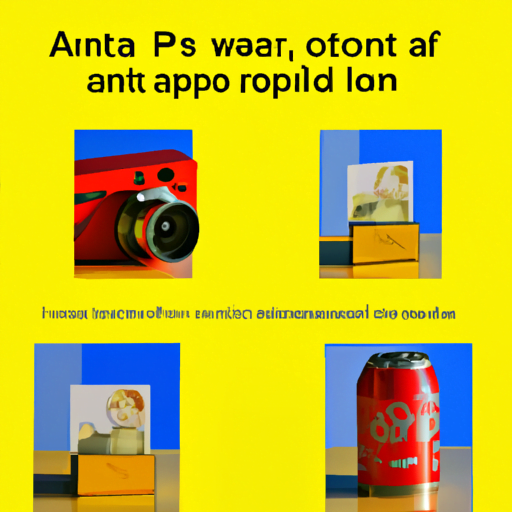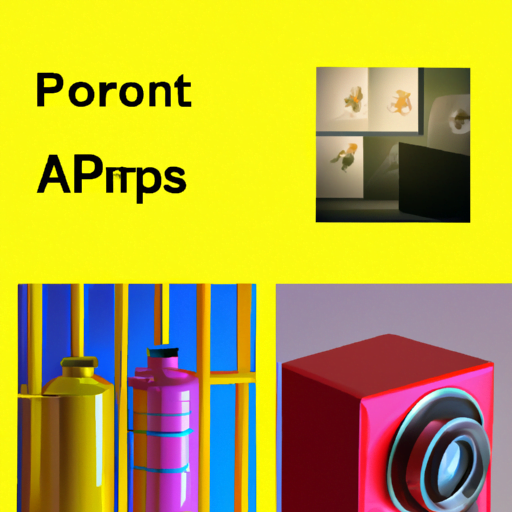
-
Table of Contents
- The Art of Visual Metaphors: Telling Stories without Words
- Understanding Visual Metaphors
- The Power of Visual Metaphors
- Examples of Visual Metaphors
- 1. The Dove of Peace
- 2. The Broken Chain
- 3. The Hourglass
- Visual Metaphors in Advertising
- 1. Apple’s “1984” Commercial
- 2. Nike’s “Just Do It” Campaign
- Visual Metaphors in Art and Design
- 1. Salvador Dali’s “The Persistence of Memory”
- 2. Shepard Fairey’s “Hope” Poster
- Using Visual Metaphors Effectively
- Conclusion
The Art of Visual Metaphors: Telling Stories without Words

Visual metaphors are powerful tools that allow artists, designers, and communicators to convey complex ideas and emotions without relying on words. By using imagery and symbolism, visual metaphors can evoke strong emotions, create connections, and tell stories that resonate with audiences. In this article, we will explore the art of visual metaphors, their significance, and how they can be effectively used in various fields.
Understanding Visual Metaphors
Visual metaphors are representations of one concept or idea through the use of another concept or idea. They rely on the viewer’s ability to make connections and understand the underlying symbolism. Just like verbal metaphors, visual metaphors create a bridge between two seemingly unrelated concepts, allowing for a deeper understanding and interpretation of the message being conveyed.
Visual metaphors can be found in various forms of art, design, advertising, and even everyday objects. They can be as simple as a single image or as complex as an entire composition. The key is to use visual elements that are universally understood and can effectively communicate the intended message.
The Power of Visual Metaphors
Visual metaphors have a unique power to engage and captivate audiences. Here are some reasons why they are so effective:
- Universal Understanding: Visual metaphors can transcend language barriers and cultural differences. They tap into universal symbols and archetypes that are easily recognizable and understood by people from different backgrounds.
- Emotional Impact: Visual metaphors have the ability to evoke strong emotions and create a lasting impact on the viewer. By connecting abstract concepts to tangible images, they make the message more relatable and memorable.
- Engagement and Attention: Visual metaphors grab attention and engage the viewer’s imagination. They encourage active participation and interpretation, making the audience more invested in the message being conveyed.
- Complex Ideas Simplified: Visual metaphors can simplify complex ideas and make them more accessible. By condensing complex concepts into a single image or symbol, they provide a visual shortcut to understanding.
Examples of Visual Metaphors
Visual metaphors can be found in various forms of art, design, and advertising. Let’s explore some examples:
1. The Dove of Peace
The image of a dove carrying an olive branch is a powerful visual metaphor for peace. This symbol has been used for centuries to represent the desire for harmony and the absence of conflict. It is a simple yet universally understood image that conveys a profound message.
2. The Broken Chain
A broken chain is a visual metaphor often used to represent freedom, liberation, and breaking free from constraints. This metaphor can be seen in various contexts, from political campaigns advocating for human rights to advertisements promoting products that promise liberation from societal norms.
3. The Hourglass
The hourglass is a visual metaphor for the passage of time and the inevitability of change. It is often used in artwork and design to symbolize the fleeting nature of life, reminding viewers to cherish the present moment and make the most of their time.
Visual Metaphors in Advertising
Visual metaphors play a crucial role in advertising, where capturing attention and conveying messages quickly is essential. Here are some examples of visual metaphors used in advertising:
1. Apple’s “1984” Commercial
In 1984, Apple released a groundbreaking commercial during the Super Bowl that used visual metaphors to challenge the status quo. The commercial depicted a dystopian society controlled by a Big Brother figure, with rows of mindless individuals watching a screen. A young woman, representing Apple, runs in and smashes the screen, symbolizing the liberation and empowerment that Apple’s products offer.
2. Nike’s “Just Do It” Campaign
Nike’s iconic “Just Do It” campaign is filled with visual metaphors that inspire action and determination. The campaign features athletes pushing their limits, overcoming obstacles, and achieving greatness. These visuals serve as metaphors for the challenges we face in life and the power of perseverance.
Visual Metaphors in Art and Design
Artists and designers have been using visual metaphors for centuries to convey complex ideas and emotions. Here are some notable examples:
1. Salvador Dali’s “The Persistence of Memory”
Dali’s famous painting, “The Persistence of Memory,” features melting clocks draped over various objects. This visual metaphor represents the fluidity of time and the subjective nature of reality. The melting clocks symbolize the distortion of time and the fleeting nature of our perception.
2. Shepard Fairey’s “Hope” Poster
Shepard Fairey’s iconic “Hope” poster, created for Barack Obama’s 2008 presidential campaign, is a powerful visual metaphor for optimism and change. The poster features a stylized portrait of Obama with the word “Hope” underneath. The image became a symbol of Obama’s message and resonated with millions of people.
Using Visual Metaphors Effectively
When using visual metaphors, it is essential to consider the following tips:
- Know Your Audience: Understand the cultural background, values, and beliefs of your target audience to ensure that the visual metaphor resonates with them.
- Keep It Simple: Use clear and easily recognizable symbols to avoid confusion and ensure that the message is understood at a glance.
- Context is Key: Consider the context in which the visual metaphor will be used. Ensure that it aligns with the overall message and goals of the project.
- Test and Iterate: Gather feedback and test the effectiveness of the visual metaphor before finalizing it. Iterate and refine as needed to ensure maximum impact.
Conclusion
Visual metaphors are powerful tools that allow us to tell stories, convey emotions, and communicate complex ideas without relying on words. They have the ability to engage, captivate, and inspire audiences across cultures and languages. By understanding the art of visual metaphors and using them effectively, we can create impactful and memorable experiences that resonate with people on a deep level.
